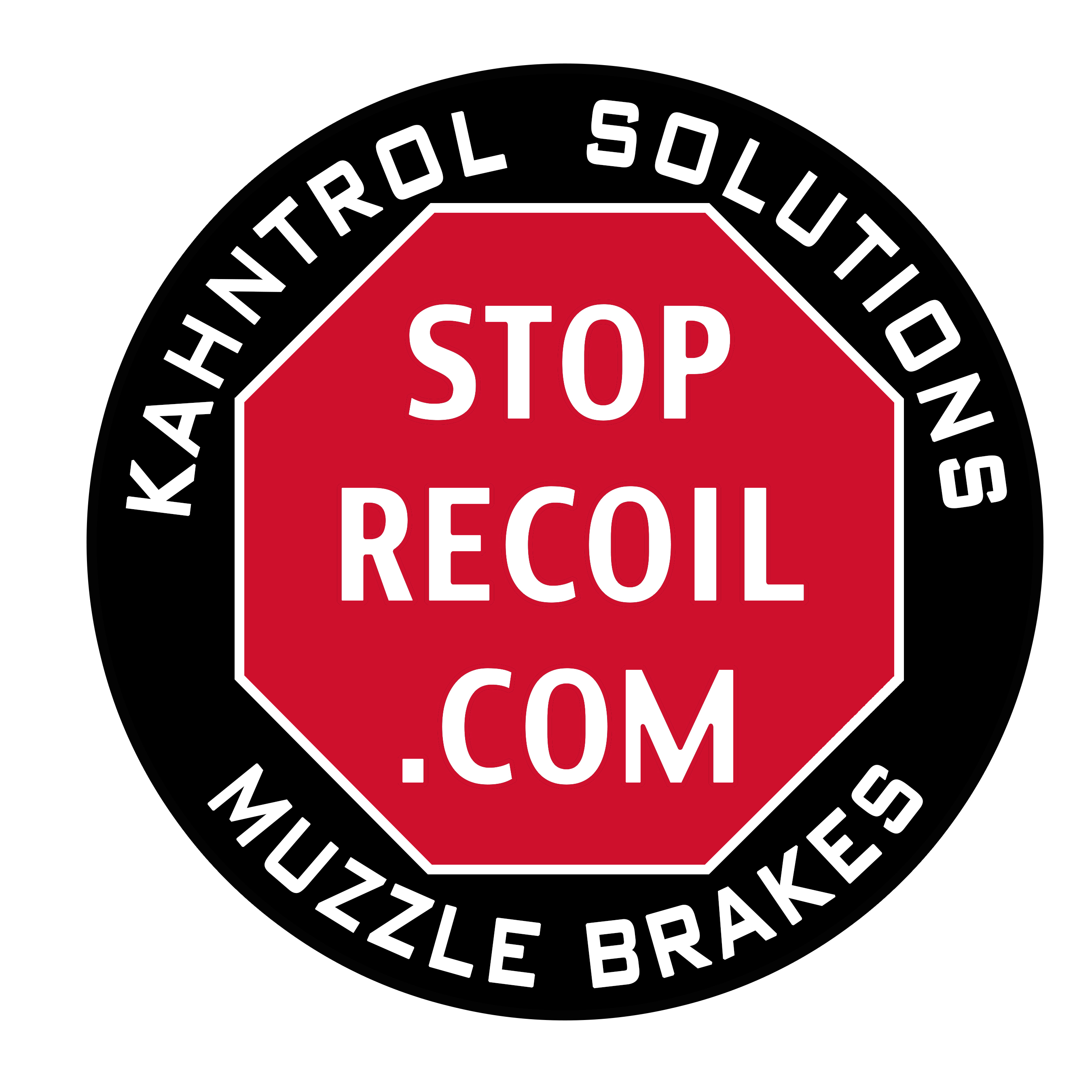DO NOT use any type of adhesive/lock tite/thread locker!!!
Shooting a High Powered Rifle creates a peak noise level that is damaging to the Human ear.
We recommend that all our customers take adequate precautions to prevent hearing damage while shooting.
We accept no responsibility for Hearing Damage caused while using any of our products.
Installation instructions for Clamp-On Muzzle Brakes:
You’ll need a 9/64″ allen wrench and a packet of anti-seize(available at any auto parts store)
1. Clear the weapon!!! Installation on a loaded weapon can kill you.
2. Clean the muzzle end of the barrel, any grit trapped between the brake and barrel WILL damage the finish.
3. Wipe down end of barrel with a light gun oil. Wipe off excess oil with a clean dry cloth. For proper clamping you only need a clean surface, DO NOT use any type of adhesive/lock tite/thread locker because under these pressures/forces, adhesives will turn into lubricants.
4. Inspect the barrel opening of the brake and make sure the is no dirt/grit inside the bore.
5. Check the size of brake bore(bullet hole) for your caliber(should be at least .020” larger than bullet diameter) as well as the barrel O.D. to Brake I.D.. Barrel manufacturing intolerances can vary even within identical model barrels.
5a. If the brake is extremely loose around the barrel, STOP and Call Jeremy at 336-453-5272, because you may have the wrong size. Even though there is a range that each brake fits, the actual difference between sizes is only about the thickness of 3 business cards stacked together.
6. Begin sliding the brake onto the muzzle of the rifle: At this point it should slide at least partially down, if it seats completely go to step 7, if it only slides part of the way go to 6b.
If brake does not engage at all, Please Contact Kahntrol Solutions at 336-453-5272 or email jeremy@kahntrol.com.
6b. If the brake only engages partially, make sure you back the screws out and push firmly with your hand until the barrel seats against the step.
7. Once the brake is engaged full depth (barrel seated against step),remove the screws and apply a dab of anti-seize on the threads and underneath the head of the screw..(Anti-seize is a MUST on screws to prevent frictional torque loss, FAILURE TO USE ANTI-SIEZE ON SCREWS CAN RESULT IN THE BRAKE DISLODGING)
Make sure the brake is level(eyeball level, not necessary to precision level), and proceed to tighten in a criss-cross
pattern starting with the 2 screws farthest from the action to 5in-lbs, repeat to 10 in-lbs, repeat to 15 in-lbs, repeat to 20 in-lbs, repeat to 25 in-lbs, repeat to 30 in-lbs, Final tightening is to be done WITHOUT TORQUE WRENCH, SEE 7A.
7a. A word about torque wrenches. Gunsmithing torque wenches err to the side of caution(to keep from crushing scope tubes or stripping sight mounts). After testing numerous “fat wrenches” and the like, we have discovered that most will show 30in-lbs and actually be applying less than 20. Using a standard 4″ L-shaped allen wrench, 35in-lbs is almost painful to the bare hand, so when in doubt, “tighten ’til it hurts”. When the screws “bark” at you, you are tightened properly.
8. Check alignment of rifle bore and brake bore. If there are any
doubts that the bores are aligned properly, DO NOT SHOOT
THE WEAPON, until you have confirmed alignment or rectified
the misalignment.
9. You are now ready to check zero and adjust POA if necessary .
10. After 50 rounds or the first trip to the range, if less than 50, you should retorque the screws to compensate
for initial settling in of the brake to barrel interface, and
then check them after every 250 rounds(you may want to
check your receiver screws at the same time, just because). Failure to check and retorque may result in your brake eventually becoming a projectile, with proper maintenance you will not have a problem.
If there is ever any signs of damage to the brake, cease use
until the brake can be checked for functionability.
• Check with the Firearm
Manufacturer whether the
firearm is designed to be used
with a Muzzle Brake
• Never use SABOT or
SHOTSHELLS in conjunction
with a Muzzle Brake, or fireform
with “cream of wheat” with brake
installed
• Before shooting, check the
correct torque of the clamping
screws and the position of the
Muzzle Brake. With long shot
strings, carry out this check
periodically ( approx. every 50
shots)
• The propellant gases, including
particles of unburned powder,
dust and or moisture will be
accelerated – exhausted
sideways from the Muzzle Brake
Safety Distance min. 1yd
Wear Ear Protection
Wear Eye Protection
